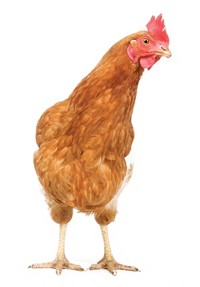Advertisement
Grab your lab coat. Let's get started
Welcome!
Welcome!
Create an account below to get 6 C&EN articles per month, receive newsletters and more - all free.
It seems this is your first time logging in online. Please enter the following information to continue.
As an ACS member you automatically get access to this site. All we need is few more details to create your reading experience.
Not you? Sign in with a different account.
Not you? Sign in with a different account.
ERROR 1
ERROR 1
ERROR 2
ERROR 2
ERROR 2
ERROR 2
ERROR 2
Password and Confirm password must match.
If you have an ACS member number, please enter it here so we can link this account to your membership. (optional)
ERROR 2
ACS values your privacy. By submitting your information, you are gaining access to C&EN and subscribing to our weekly newsletter. We use the information you provide to make your reading experience better, and we will never sell your data to third party members.
Electronic Materials
Chicken poop improves graphene catalysts
Researchers intended provocative study to highlight a problem with graphene doping research
by Sam Lemonick
January 22, 2020

In addition to its strength and conductivity, graphene might also rival platinum as a catalyst when doped with additional elements. But a provocative new paper argues that a lot of the current efforts to find the right dopants might not be worth crap (ACS Nano 2020, DOI: 10.1021/acsnano.9b00184).

Pure graphene—a 2-D carbon allotrope—isn’t as efficient a catalyst as some researchers would like it to be. But scientists have found that adding small amounts of heteroatoms like sulfur, potassium, or halogens—a process called doping—can improve the material’s performance. That observation has unleashed a wave of papers measuring the effect of doping graphene with one or several elements. Martin Pumera of Brno University of Technology; China Medical University; and the University of Chemistry and Technology, Prague, thinks scientists’ resources would be better spent trying to understand the fundamental reasons behind doped graphene’s electrocatalytic abilities, rather than publishing paper after paper about different dopants.
To make the point, Pumera and colleagues doped graphene with actual crap—in this case, from a collaborator’s chickens—and showed that it too improved graphene’s electrocatalytic performance. They prepared graphene oxide by two different methods, then blended it with bird droppings before making graphene via thermal exfoliation (technically, the researchers made reduced graphene oxide, which is easier and cheaper to make than graphene and has similar properties). They then measured its utility in oxygen reduction and hydrogen evolution reactions.
Pumera says his goal wasn’t to convince people that dropping-doped graphene is a viable catalytic material, although the researchers note that it does have potential, considering their results and chicken poop’s very low cost. Nor was he going for a cheap joke. The point, he says, is to draw attention to the trend of graphene dopant research, which he doesn’t think improves our understanding of doped graphene.
“The goal of this article is to stop the flood of useless studies that just waste the time of people performing them, people who handle and review papers, and people who review and read them,” says Yury Gogotsi of Drexel University, who oversaw the paper’s publication as associate editor of ACS Nano, where the research was published as a non-peer-reviewed perspective article. Pumera’s attempt to draw attention seems to be working—within 2 days of publication, the article was the journal’s most-read paper of 2020.
As for understanding how dopants affect graphene electrocatalysis, Pumera readily admits that this article adds nothing. The researchers suggest metals in the droppings are the reason for its success as a dopant, a conclusion supported by past research. Pumera says that many catalytic improvements attributed to metal-free doped graphene actually resulted from metal impurities.
James Tour of Rice University has come to the same conclusions about the effect on graphene electrocatalysis by metals, specifically manganese (Carbon 2018, DOI: 10.1016/j.carbon.2018.02.082). But he is put off by the tone of the ACS Nano paper, describing it as condescending. He says the article will help if it alerts people to metals’ role in graphene doping. But “why speak to us so sarcastically?” he wonders. Tour also worries the article could hurt research efforts if it makes doped graphene electrocatalysis look like a waste of time to funding agencies, journal editors, or other chemists.
UPDATE
This story was updated on Jan. 23, 2020, to add Martin Pumera's affiliation with the University of Chemistry and Technology, Prague.




Join the conversation
Contact the reporter
Submit a Letter to the Editor for publication
Engage with us on Twitter